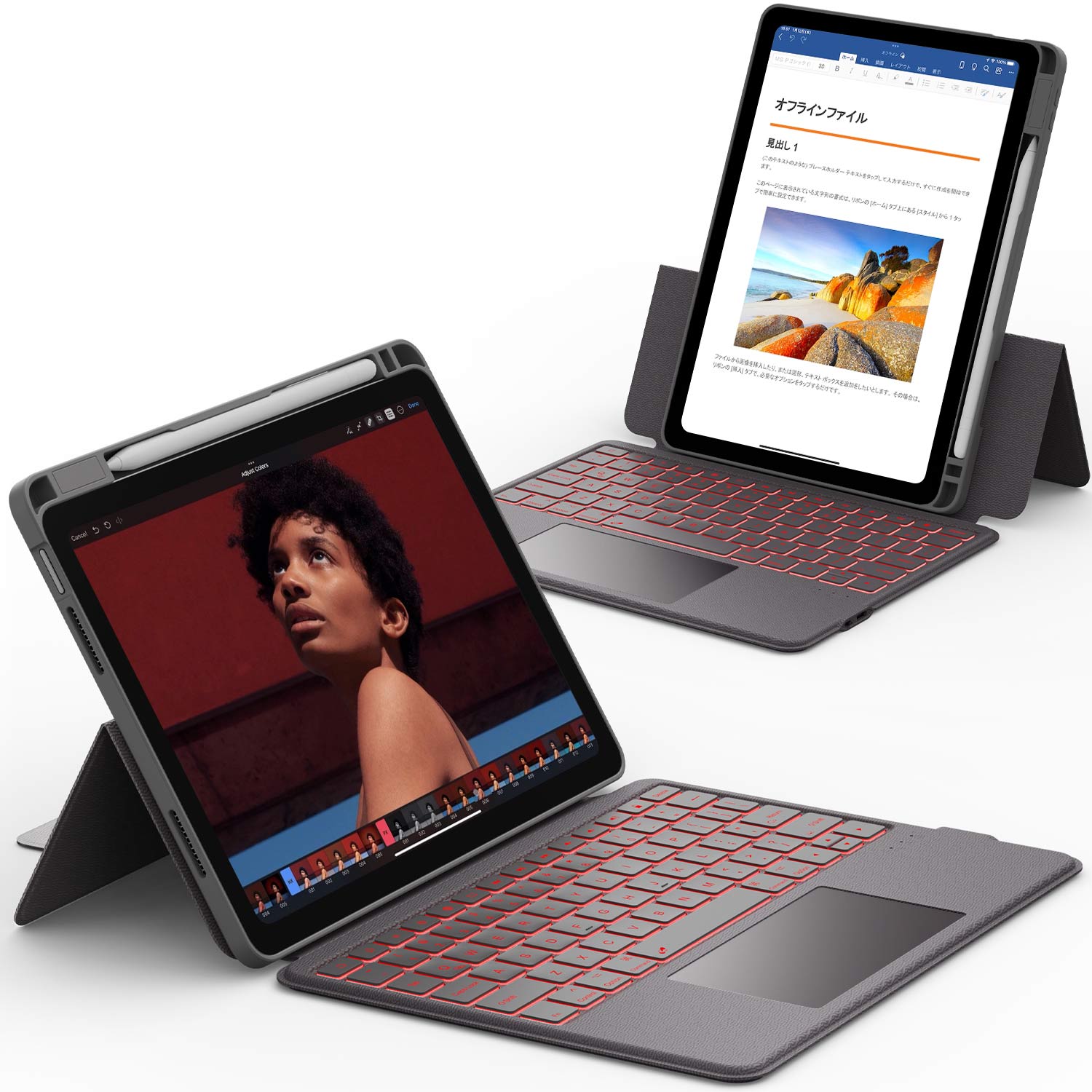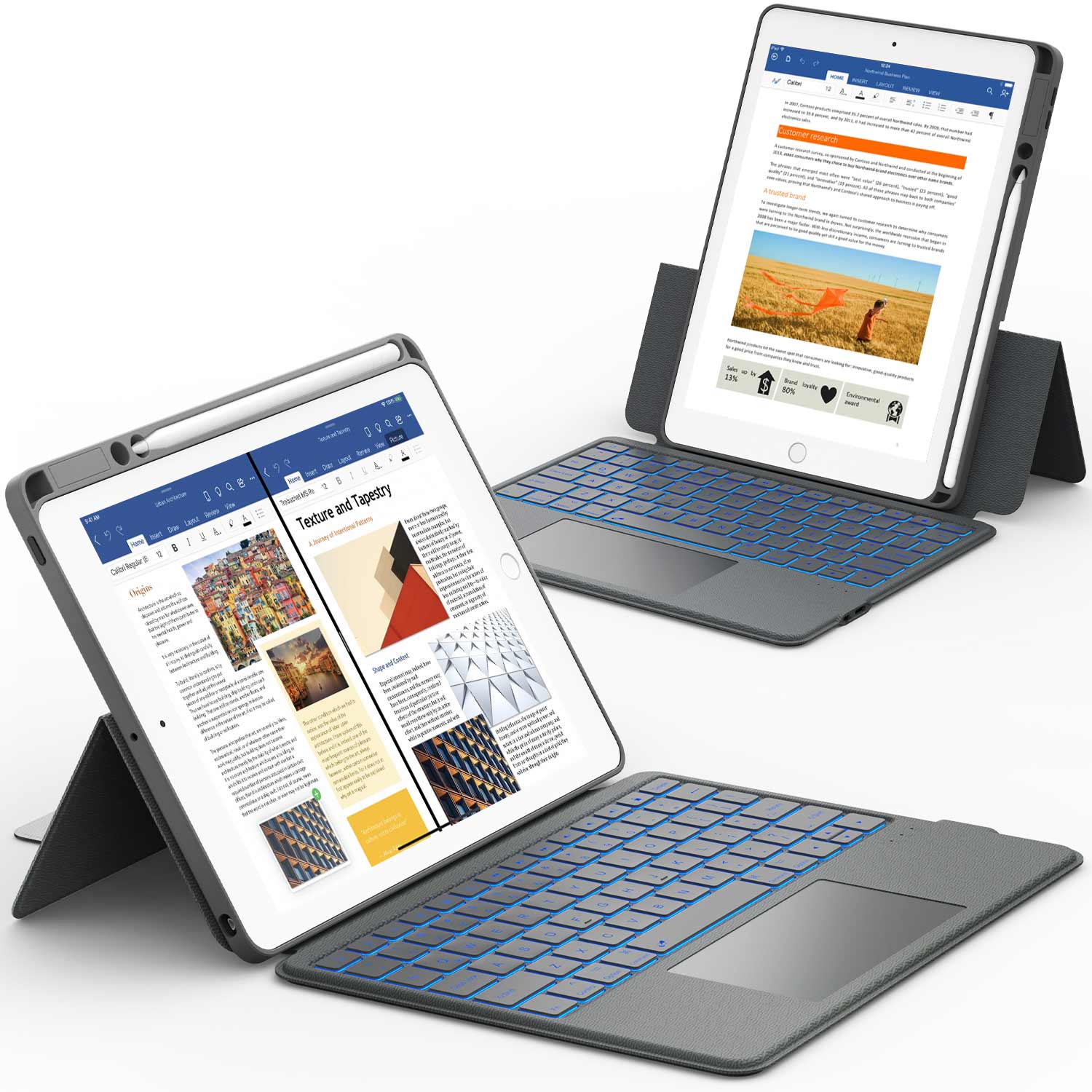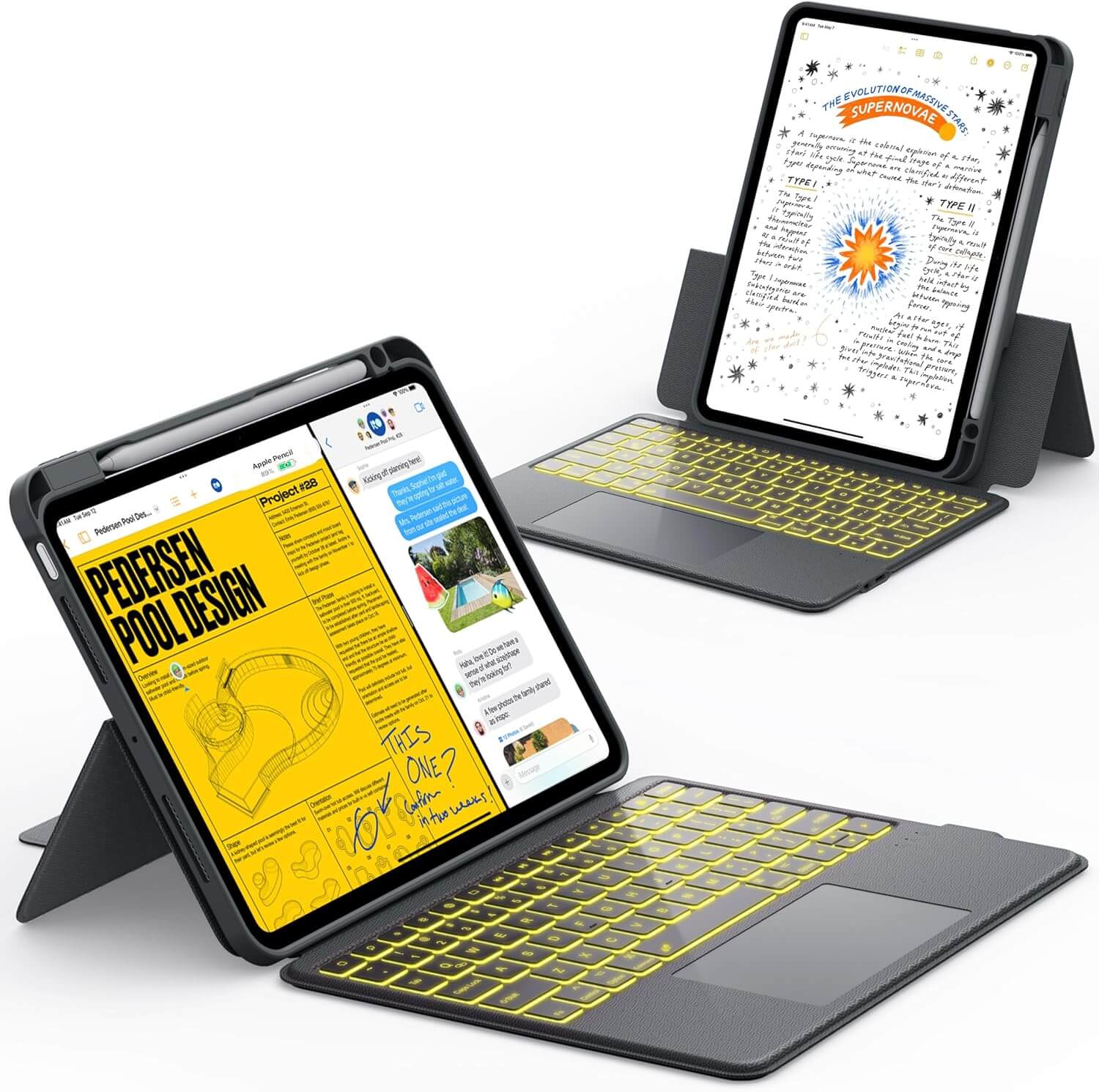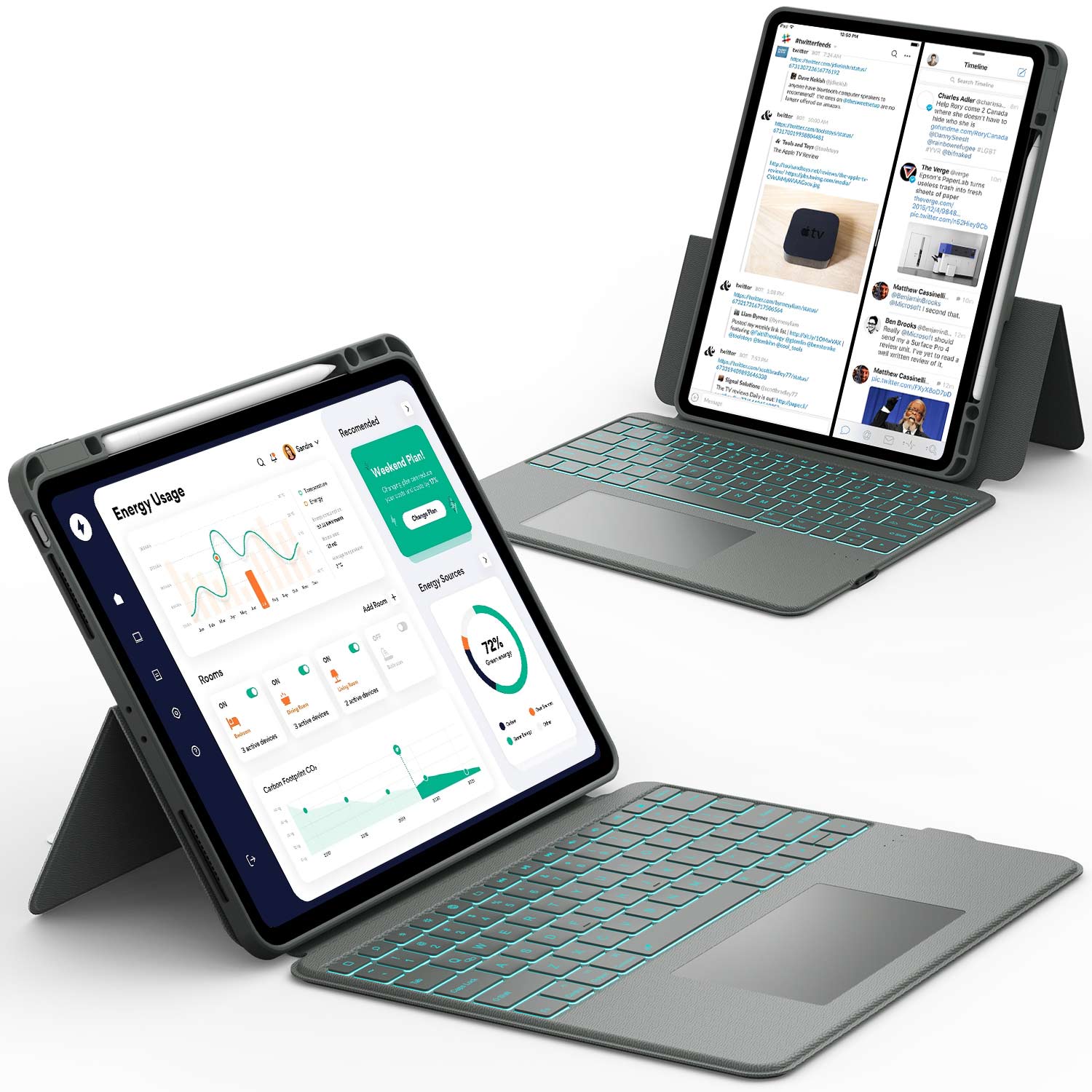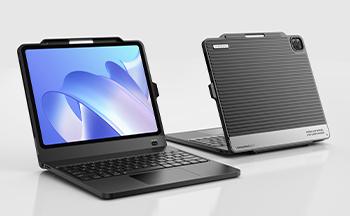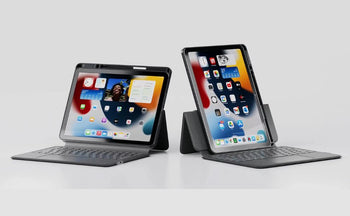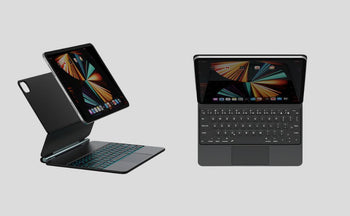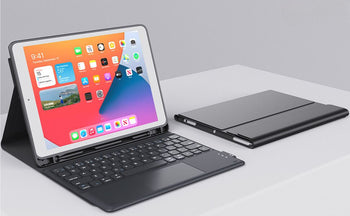Thinking about getting a new tablet but not sure whether to go with a Samsung or an iPad? It's a common question, and honestly, both are great. But they definitely have their own strengths and weaknesses. We're going to break down the key differences so you can figure out which one is the best fit for what you need. Which is More User-Friendly: iPad or Samsung? Let's find out.
Key Takeaways
- iPads usually have stronger processors, which makes them better for tough jobs like editing videos.
- Samsung tablets often use OLED screens, which give you really deep blacks and bright colors, great for watching movies.
- iPadOS is known for being smooth and easy to use, with apps that work perfectly. Android on Samsung lets you change things more.
- Apple's accessories work really well together, but Samsung also has good options, and the S Pen often comes with their tablets.
- iPads tend to have longer battery life and get software updates for more years, meaning they might last longer overall.
Performance Capabilities

Processing Power Differences
When it comes to raw processing power, there are some key differences between iPads and Samsung tablets. iPads typically use Apple's own silicon, like their A-series or M-series chips. These chips are known for their speed and efficiency. Samsung tablets, on the other hand, often use Qualcomm Snapdragon processors, which are also very capable but might have slightly different strengths. For example, the latest iPad Pro models boast Apple's M3 chip, offering a significant performance boost compared to older generations. Meanwhile, Samsung's Galaxy Tab S9 series uses a customized Snapdragon 8 Gen 2 for Galaxy, optimized for their devices. The choice of processor directly impacts how quickly the tablet can perform tasks, from simple web browsing to more demanding applications.
Demanding Task Handling
For demanding tasks like video editing, gaming, and running complex applications, the processing power of a tablet really matters. iPads, especially the Pro models, often have an edge because of their powerful chips and optimized software. They can handle these tasks smoothly and efficiently. Samsung tablets are also quite capable, but depending on the specific model and processor, they might not always match the iPad's performance in very intensive scenarios. It's worth noting that software optimization plays a big role here; an app designed specifically for iPadOS might run better than the same app on Android.
Real-World Performance Scenarios
In everyday use, both iPads and Samsung tablets perform well. However, the differences in processing power can become more noticeable when multitasking or running resource-heavy apps. For example, if you're editing a 4K video on the go, an iPad Pro with an M3 chip will likely offer a smoother experience than a Samsung Galaxy Tab S9 with a Snapdragon processor. Similarly, gamers might find that certain graphically intensive games run better on the iPad due to its optimized graphics processing. Ultimately, the best choice depends on your specific needs and how you plan to use the tablet.
It's important to consider that benchmarks don't always tell the whole story. Real-world performance can be affected by factors like software optimization, background processes, and thermal management. So, while one tablet might score higher in a benchmark test, the other might actually feel faster in certain situations.
Here's a quick comparison table:
| Feature | iPad Pro (M3) | Samsung Galaxy Tab S9 |
|---|---|---|
| Processor | Apple M3 | Snapdragon 8 Gen 2 |
| Video Editing | Excellent | Very Good |
| Gaming | Excellent | Very Good |
| Multitasking | Excellent | Good |
Display Technology and Visuals

Screen Type Variations
Okay, let's get into the screens on these things. It's one of the first things you notice, right? Samsung usually goes with OLED screens in their tablets. What does that mean for you? Well, you get super vibrant colors and really deep blacks. Everything just pops a bit more. iPads, on the other hand, have mostly stuck with LCD screens. The iPad Pro models are trying to catch up, though, using mini-LED tech. It's a step up from regular LCD, giving you better contrast and brightness. It really comes down to what you like. Do you prefer those super-saturated colors from OLED, or do you like the more natural look you often get with LCD? It's a personal thing.
Brightness and Color Accuracy
Brightness is a big deal, especially if you plan on using your tablet outside. LCD screens often win in direct sunlight. OLED screens can sometimes be a little harder to see when it's super bright out. Color accuracy? Both can be excellent, but it can depend on the specific model and how it's calibrated. You'll want to check reviews for the specific models you're considering to see how they stack up.
Screen Size Options
Samsung tends to give you more choices when it comes to screen sizes. That can be a big deal depending on what you want to do with the tablet. Need something super portable? Samsung might have an edge. Want a bigger screen for creative work? Both brands have options, but you'll want to compare the exact dimensions and resolutions. Here's a quick rundown:
- Samsung: More screen size options overall.
- iPad: Fewer size options, but the Pro models offer larger sizes.
- Consider what you'll be using the tablet for when choosing a size.
Ultimately, the best display is the one that looks best to you. Consider what you'll be using the tablet for, and try to see both in person if possible before making a decision. If you are looking for Samsung tablets with superior AMOLED displays, they are ideal for media consumption.
Software Experience and Ecosystem
Operating System Differences
Okay, so when you pick up an iPad or a Samsung tablet, the first thing you'll notice is the operating system. iPads run iPadOS, which is Apple's own thing, kinda like a bigger version of what's on iPhones. Samsung tablets use Android, but with Samsung's One UI on top. It changes how Android looks and feels. Some people love it because it's super customizable, others not so much. It really comes down to what you like. I think the best way to describe it is that iPadOS is more straightforward, while One UI lets you tweak almost everything.
App Ecosystem and Optimization
This is where things get interesting. Apple usually wins when it comes to apps. The App Store generally has more apps that are actually made for tablets. The Google Play Store has gotten better, but it's still behind. If you're into drawing software or video editing, an iPad might be a better choice. It's not just about the number of apps, but also how well they work. Apps on iPadOS tend to be optimized better for the tablet's hardware.
User Interface Customization
One of the biggest differences is how much you can change things. With One UI on Samsung tablets, you can tweak almost everything. Color schemes, navigation, you name it. iPadOS is more set in its ways. Some people find it more intuitive, others find it limiting. It really depends on whether you like to tinker or prefer something that just works. I know some people who spend hours customizing their Android tablets, while others just want something that's easy to use right away.
Multitasking Implementation
Both iPadOS and One UI let you do multiple things at once, like split the screen or have floating windows. But they do it differently. Some people find iPadOS's multitasking easier to understand, while others like One UI's flexibility. It's worth trying both to see which one you like better. I personally prefer the way iPadOS handles multitasking, but I can see why some people would prefer One UI's approach.
Ultimately, the best software experience depends on what you need and like. If you're already in the Apple world, an iPad might be a natural choice. If you like Android's open-source nature and being able to change things, a Samsung tablet could be better. It's worth checking out the firmware upgrade tool to keep your device up to date.
Here's a quick rundown:
- iPadOS: Simple, optimized, but less customizable.
- One UI: Customizable, flexible, but can be overwhelming.
- App Store: More tablet-optimized apps.
- Google Play Store: Improving, but still behind.
Accessory Availability and Integration

Okay, let's get into the fun stuff – accessories! It's not just about having a tablet; it's about what you can do with it, right? Both Samsung and Apple have a lot to offer, but there are some key differences. It's like choosing between two different toolboxes – both have tools, but some are better suited for certain jobs.
First-Party Accessory Offerings
Apple's first-party accessories, like the Magic Keyboard and Apple Pencil, are known for their sleek design and tight integration with iPadOS. However, they often come with a premium price tag. Samsung has really stepped up their game in recent years, offering a wider range of accessories that are often more affordable. Samsung's keyboard covers often include a trackpad, which is a nice bonus.
Enhance your tablet with the Chesona Tablet Keyboard, a perfect companion for both iPads and Samsung tablets. With its comfortable typing, sleek design, and affordable price, it’s ideal for turning your tablet into a productivity hub.
Third-Party Accessory Compatibility
When it comes to third-party accessories, both iPad and Samsung tablets have a wide range of options available. You can find cases, screen protectors, and other accessories from various manufacturers at different price points. Finding a good quality, durable case can be tricky. Cases are everywhere, but finding a good quality, durable case can be tricky. It's always a good idea to read reviews and compare prices before making a purchase. You can even track your order online.
Stylus and Keyboard Integration
Styluses and keyboards can really transform your tablet from a simple media consumption device into a productivity powerhouse. The S Pen is included with some Samsung tablets, which is a huge plus. Apple's Pencil is sold separately and is quite pricey. If you're into drawing or note-taking, this is a big factor.
Choosing the right accessories can really transform your tablet from a simple media consumption device into a productivity powerhouse. Think about what you want to do with your tablet and choose accordingly.
Here's a quick comparison:
| Feature | iPad | Samsung |
|---|---|---|
| Stylus | Apple Pencil (sold separately, pricey) | S Pen (included with some models) |
| Keyboard | Magic Keyboard (pricey) | Keyboard covers (often include trackpad) |
| Price | Generally more expensive | Generally more affordable |
Battery Life and Power Management

Battery Capacity Comparison
Okay, so when you glance at the specs, Samsung Galaxy Tabs often seem to have a bigger battery. For example, some models boast an 8,000 mAh battery, while comparable iPads might have something closer to 7,600 mAh. That's a difference, sure, but it doesn't automatically mean the Samsung wins. Battery capacity is just one piece of the puzzle.
Real-World Battery Performance
This is where things get interesting. iPads are known for their efficient power management. You might find that an iPad can squeeze more out of its battery in everyday use. It really depends on what you're doing. If you're just browsing the web or watching videos, both tablets should last a good amount of time. But if you're gaming or using other power-hungry apps, the iPad's optimized software could give it an advantage.
Maximize your tablet’s potential with the Chesona Keyboard Case. Affordable and compatible with iPads and Samsung tablets, it’s great for work or study. Check it out at Chesona’s website!
Power Efficiency
Samsung often includes fast charging in their Galaxy Tabs. This means you can juice up your tablet much quicker than you might expect. Apple has been a bit slower to adopt super-fast charging, though they are catching up. So, if you're someone who needs to top up their battery in a hurry, the Galaxy Tab might be the better choice. It's all about how quickly you need to get back to 100%.
Ultimately, battery life is super subjective. It depends on your usage habits, screen brightness, and the types of apps you use. Both Samsung and Apple make tablets with solid battery performance, but the winner really depends on your specific needs.
Here's a quick comparison table:
| Feature | iPad | Samsung Galaxy Tab |
|---|---|---|
| Battery Capacity | Varies by model, generally efficient | Varies by model, often larger on paper |
| Charging Speed | Slower, catching up | Often faster charging |
| Power Efficiency | Generally well-optimized | Can vary based on usage |
Storage Options and Expandability
Internal Storage Configurations
When you're buying a tablet, one of the first things you'll notice is the range of internal storage options. iPads usually come in several fixed sizes, like 128GB, 256GB, 512GB, and even 1TB or more on the higher-end models. Samsung, on the other hand, often mirrors this with similar base options. The key difference? What happens when you fill it up. Choosing the right size upfront is important, because you can't upgrade it later on an iPad.
External Storage Flexibility
This is where Samsung really sets itself apart. Many Samsung tablets include a microSD card slot, letting you expand the storage. This is a huge advantage if you plan to store a lot of large files, like videos, photos, or games. With an iPad, you're stuck with what you bought, unless you use cloud storage or external drives with adapters. But having that physical card slot? It's just convenient. For example, you can check out the best memory cards to expand your storage.
Cloud Storage Integration
Both iPad and Samsung tablets play nice with cloud storage services like iCloud, Google Drive, and Dropbox. This means you can easily access your files from anywhere, and it's a good way to back up your data. However, cloud storage relies on an internet connection, and it can get expensive if you need a lot of space. Plus, some people just don't like the idea of storing their stuff on someone else's servers.
Ultimately, the best storage solution depends on your needs and preferences. If you want the flexibility to expand your storage later on, Samsung is the way to go. If you're happy with a fixed amount of storage and you're already invested in the Apple ecosystem, an iPad might be a better fit.
Software Updates and Longevity
Operating System Update Frequency
When it comes to keeping your tablet fresh and secure, software updates are key. Apple has a pretty solid reputation for pushing out updates to their iPads regularly. You can usually count on getting the latest iPadOS version promptly after it's released. Samsung has definitely stepped up their game in recent years, but the update frequency can still vary a bit depending on the specific tablet model and carrier. It's something to keep in mind if staying on the cutting edge is important to you.
Duration of Software Support
This is where the differences become more apparent. Apple tends to support their iPads with software updates for a longer period compared to Samsung tablets. You might see an iPad getting updates for five, six, or even seven years, while Samsung tablets might get around three to four years of major OS updates. This extended support can make a big difference in the long run, especially if you plan on holding onto your tablet for a while.
Device Longevity and Value Retention
Because of the longer software support, iPads often hold their value better over time. They continue to receive the latest features and security patches, which keeps them relevant and useful. Samsung tablets, while still good devices, might start to feel a bit outdated sooner as they stop receiving major software updates. This can impact their resale value and overall longevity.
Choosing between iPad and Samsung tablets involves considering how long you intend to use the device. If you prefer frequent upgrades, the update duration might not be a big deal. However, for those planning long-term use, the extended support of iPads can be a significant advantage.
Here's a quick comparison:
- iPad: Longer software support, better value retention.
- Samsung: Improving update frequency, shorter support duration.
- Consider your long-term usage plans.
Picking Your Perfect Tablet
So, after looking at everything, it's clear there's no single "best" tablet for everyone. Both iPads and Samsung tablets are really good, but they shine in different ways. If you're into creative stuff, like drawing or making videos, and you want something super smooth that just works, an iPad is probably a great fit. But if you like to change things up, want a lot of options, or just need a solid tablet for watching movies and everyday tasks without spending a ton, a Samsung tablet could be exactly what you need. Think about what you'll actually use it for, and that'll help you pick the right one.
Frequently Asked Questions
Which tablet is better for everyday use?
For everyday stuff like browsing the web, watching videos, or scrolling through social media, both iPads and Samsung tablets work really well. But if you need to do more complicated tasks, like editing videos professionally or creating detailed drawings, iPads often have a bit more muscle.
Which tablet lasts longer?
Generally, iPads tend to keep their value longer and get software updates for a greater number of years. This means an iPad might feel new and work smoothly for a longer time compared to a Samsung tablet.
Can I add more storage to my tablet?
Samsung tablets usually give you more options for storage. You can often add a small memory card to get more space. iPads don't have this feature, so you need to pick the right amount of storage when you first buy it.
What's the main difference in their operating systems?
iPads use Apple's own iPadOS. It's known for being very smooth and having apps that are perfectly made for the device. Samsung tablets use Android, which is more open and lets you change things more, but sometimes the apps aren't as polished.
Which tablet works best with my other devices?
If you already own an iPhone or a Mac computer, an iPad will probably connect and work with them much more easily. Samsung tablets, on the other hand, pair up better with Android phones and Windows computers.
Which tablet is better for creative work?
For creative tasks like drawing or video editing, iPads often have an advantage because of their powerful processors and a wider selection of apps made specifically for those activities. While Samsung tablets can handle some creative work, iPads are generally seen as stronger in this area.
